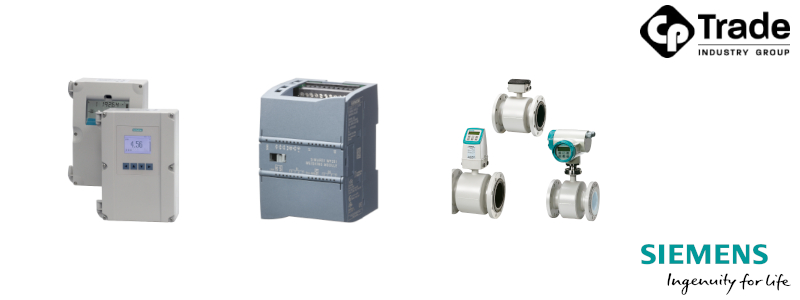Value of digitalization in process automation

Value of digitalization in process automation
Digital transformation and automation of production processes increase efficiency of existing activities in enterprises and stimulate changes that affect the development of companies. These two key factors indicate the path to new chances, possibilities and are adding value for customers. As many as 45% of business activities can be automated using current technologies which increases the potential for growth in productivity. According to the latest data the value of the digital transformation market has a chance to reach $3.2 trillion by 2025.
Organizations that embark on a journey towards digital transformation will need to optimize their processes to achieve goals and uncover new growth potential. Automation can help in the effective management of processes in factories, industry, public infrastructure sectors and in the IT environment. Mainly these sectors should prepare for an optimized digital future. Digitization and modern technologies today play a key role in the evolution of enterprises, but what is their real impact on process automation?
What is digital transformation?
Digital transformation is the process of integrating digital technology with a company to radically change the way a company operates, reduce the costs of doing business and increase revenues without increasing basic operational costs. It is a cultural change requiring the use of digital tools to optimize processes and change the way a company makes decisions. Digital transformation involves rethinking an organization's business model and promoting a culture of innovation to internally increase enterprise efficiency.
Digitization is a process that assesses a company's maturity for reorganization, establishing a clear path to broadly scoped changes and their implementation to achieve digital transformation. This strategy involves not only placing new technologies within the company but also changing the way of thinking, hiring the right specialists, implementing knowledge-supporting technologies and introducing a new - optimized and efficient way of working. That is why the scope of a digital transformation strategy goes beyond technology itself and involves transforming the entire organization to achieve its goals and increase process efficiency. Thanks to digital transformation data analysis is possible, the application of modern solutions such as artificial intelligence, cloud data storage, robotics and the implementation of technologies like wireless networks (SCALANCE W components), security devices (SCALANCE S components), Ethernet switches (SCALANCE X components), mobile routers for wireless communication and for wired connections (SCALANCE M).
What is automation?
Automation involves using modern technologies to perform optimized actions and processes that reduce or replace manual work. It refers to the application of technology to minimize human intervention while using previously established decision-making criteria and specified actions. Digital transformation is key to process automation because it helps digitize routine processes, streamline workflows, exchange data faster and improve productivity, ultimately delivering greater business value. In turn, automation enables faster and cheaper operation of production processes, increases the efficiency of task execution, their reliability and consistency which supports the continuity of work throughout the organization.
How does digitization affect business process automation?
The impact of digitization on process automation is undeniable. Companies gain a competitive advantage when they can effectively implement automation to speed up processes, reduce errors and leverage advanced analytics. Here are some key benefits of digitization in business process automation.
- Scalability - digitization and process automation enable scaling which means that companies can increase revenue without increasing basic operational costs and also quickly and efficiently adapt to changing market needs.
- Streamlining workflows - digitization allows organizations to streamline workflows by automating routine tasks that previously required employee handling. This allows such a person to focus on other tasks. Additionally digitization facilitates collaboration between departments, teams and geographical locations allowing for more efficient communication, information exchange and work on joint projects.
- Cost reduction - by eliminating errors resulting from manual work and increasing efficiency, digitization and process automation help companies achieve significant cost savings. As a result, companies can deliver higher quality products and services which translates to customer satisfaction and a larger market share.
- Better decision-making - digitization enables the collection, analysis and processing of data from various sources in real-time, allowing for the examination of processes, understanding the market, competition and customers. As a result, organizations can make better data-driven strategic decisions that lead to the achievement of set goals.
- Innovative approach - with digitization and process automation organizations can introduce new products and services to the market faster, allowing them to gain a competitive advantage and maintain a leading position in their industry.
- Data security - the introduction of digital solutions allows for better data protection safeguarding it from loss, theft or unauthorized access. Proper application of technology and procedures related to digitization can contribute to an increased level of information security in a company.
Get to know our products for industry, processing, mining and public utilities that will improve process efficiency.
Modern electromagnetic and ultrasonic converters for precise measurement in the most challenging conditions.
- 7ME6520-3FN12-2HF1 - SITRANS FM MAG 5100 W electromagnetic flow sensor, flanged, diameter DN 15 to DN 1200 (1/2" to 48"). Suitable for volume flow measurement of liquids (conductive), for applications in water abstraction, water & wastewater treatment, water distribution networks, custody transfer metering.
- 7ME6310-3FF13-5AA1 - SITRANS FM MAG 3100 full-bore electromagnetic flow sensor, flanged, diameter DN 15 to DN 2000 (1/2" to 78"). Suitable for volume flow measurement of liquids (conductive), main applications in process industry, chemical industry, steel industry, mining, utility, power generation and distribution.
- 7ME6910-1AA10-1AA0 - SIEMENS MAG 5000 universal measuring transmitter for electromagnetic flowmeter (MAGFLO type) with a measurement accuracy of 0.4% measured value.
- 7ML5221-1CB11 - SITRANS Probe LU ultrasonic level transmitter: continuous, non-contact, up to 12m range. Monitors level and volume in liquids and slurries. With optional PROFIBUS PA.
- 7ML1201-2GE00 - The Probe Ultrasonic level transmitter: continuous, non-contact, 5m range. Monitors level for liquids and slurries. With 3-wire relay output.
- 7ML1115-3CA30 - EchoMax XPS-10 ultrasonic level transmitter: continuous, non-contact, 10m range, for liquids and solids.
- 7ML5221-1AB11 - SITRANS Probe LU ultrasonic level transmitter: continuous, non-contact, up to 12m range. Monitors level and volume in liquids and slurries. With optional PROFIBUS PA.
- 7ML5221-1BB11 - SITRANS Probe LU ultrasonic level transmitter: continuous, non-contact, up to 12m range. Monitors level and volume in liquids and slurries. With optional PROFIBUS PA.
- 7MF0300-1TD01-5AF0-ZA00+E01 and 7MF0400-1TD01-5AF0-ZA00+E01 - SITRANS P320 and P420 pressure transmitters equipped with remote safety operation. With SIMATIC PDM they reduce commissioning time in applications because the operator can program the transmitter from the control room. Communication: 4...20 mA/ HART, PROFIBUS PA, FOUNDATION Fieldbus.
- 7MF0300-1TD01-5AF0-ZA00+C20+E01 - SITRANS P320 pressure transmitter, gauge pressure HART (4...20 mA), electrical equipment for furnaces and ancillary equipment.
Analyze signals from weight sensors
Weighing electronics can be implemented in various branches of industry to ensure precise signals from weight sensors or industrial scales. This technology is used during the weighing of products, silos or containers in construction, agriculture as well as in the chemical, food and pharmaceutical industries.
- 7MH4960-6AA01 - SIWAREX WP251 calibratable weighing electronic for batching and filling process (1 channel) for strain gauge load cells/full bridges (1-4 mV/V) for SIMATIC S7-1200 or stand alone, RS485 and Ethernet-Interface.
- 7MH4960-2AA01 - SIWAREX WP231 calibratable weighing electronic (1 channel) for strain gauge load cells/full bridges (1-4 mV/V) for SIMATIC S7-1200 or stand alone, RS485 and Ethernet-Interface, onboard I/O: 4 DI / 4 DO, 1 AO (0/4...20mA).
Modern sensors, controllers and signaling device that can be used to check the filling quantity and for weighing and dosing filling.
- 7MH5102-2AD00 - SIWAREX WL 260 Load Cell SP-S AA 10kg C3, rated load 10 kg, accuracy class C3, 3m cable length, 6 conductor, material aluminium, degree of protection IP65.
- 7ML5033-1AA00-1A - MultiRanger 100/200 ultrasonic level controller: continuous, non-contact, 15m range. Monitors level, volume and open channel flow in liquids, slurries and solids.
- 7ML5745-1AA41-1BA0 - SITRANS LVL100 vibrating point level switch. Detects level and material in liquids and slurries.
Find out more about our offer by visiting the tabs with Siemens-PLC and Schneider-PLC products. If the product you are looking for is not on our website or you have additional questions, please contact us at inquiry@plc-drives.com or directly at our representatives (addresses available in the "Contact" tab). We are able to supply you with all Siemens and Schneider PLC products, including those already withdrawn from production. Check our offer!
